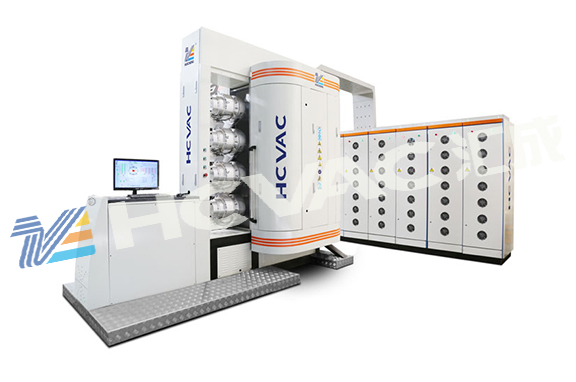The adhesion of the workpiece coating layer directly affects the service life of the workpiece. Many manufacturers have strict requirements for the coating layer when coating workpieces. Therefore, when purchasing a pvd coating machines, the choice of coating technology is also more cautious. Below, the editor of Huicheng Vacuum will introduce to you the research process of film adhesion, hoping to help you:

When performing magnetron sputtering coating on a polymer coating, the film layer is very thin, usually 50 to 200nm, so the test of adhesion of ultra-thin coatings on this softer substrate is different from that of coatings in the usual sense. Layer adhesion test. For ordinary polymer coating adhesion testing, since its thickness is usually several to tens of microns, the adhesion can generally be tested by directly peeling off the coating or some other standard methods; for metal on hard substrates There are more than 20 methods that have been proposed for coating, including stretching, shearing, pulling, grinding, etc. There is almost no connection between different methods, and the data difference can reach two orders of magnitude. Therefore, various The data obtained by this method cannot be generalized. There are currently very few domestic research reports on the adhesion test of ultra-thin coatings on polymer coating substrates. In this study, the aluminum pillar-to-bond positive pull method was used to test the adhesion of ultra-thin coatings.
Magnetron sputtering pvd coating machines coating film test method: (1) Coating adhesion test method After the coated aluminum column is bonded with the adhesive, connect the thread at the other end of the aluminum column to the tensile chuck of the material tensile testing machine Connected, by testing the tensile strength of the adhesive aluminum column, the adhesion can be examined in two situations. When no coating falls off on the damaged surface, the adhesion of the coating is greater than the tensile strength of the aluminum column. When the coating falls off on the damaged surface, the tensile strength of the aluminum column is approximately the adhesion of the coating.
Magnetron sputtering
pvd coating machines coating film testing process:
(1) Pre-treatment of aluminum pillar coating Use 400# and 600# water-grinding sandpaper to polish the opposing surfaces of the aluminum pillars, rinse them with tap water and dry them in an oven at (80±5)°C for 1 hour. Dilute 100 parts of polyurethane paint with 30 to 50 parts of industrial butyl acetate, and then apply it on the adhesive surface (only one of the two aluminum posts are adhesive), then put the painted surface facing up and put it into the (60± 5) Heat in an oven at 10°C for 1 hour, then raise the temperature to (80±5)°C and keep warm for 5 to 6 hours.
(2) Aluminum pillar coating: Magnetron sputtering coating is performed on the brushed surface of the aluminum pillar. The processing process parameters are:
Coating material H62
Sputtering power/kW 20~30
Sputtering time/min 2
Sputtering pressure/Pa 0.1~0.4
Target distance/mm 600
(3) Adhesion of aluminum columns to the coated aluminum columns. Immediately apply glue to the coated aluminum columns. Three types of adhesives are used: unsaturated polyester putty, one-component polyurethane varnish and epoxy resin glue, and then another new aluminum column is attached to it. Pair sticky. After positioning and compaction, it is first cured at room temperature for 24 hours, then heated and cured at (70±5)°C for 6 hours, and then the tensile strength test of the aluminum column is carried out.



